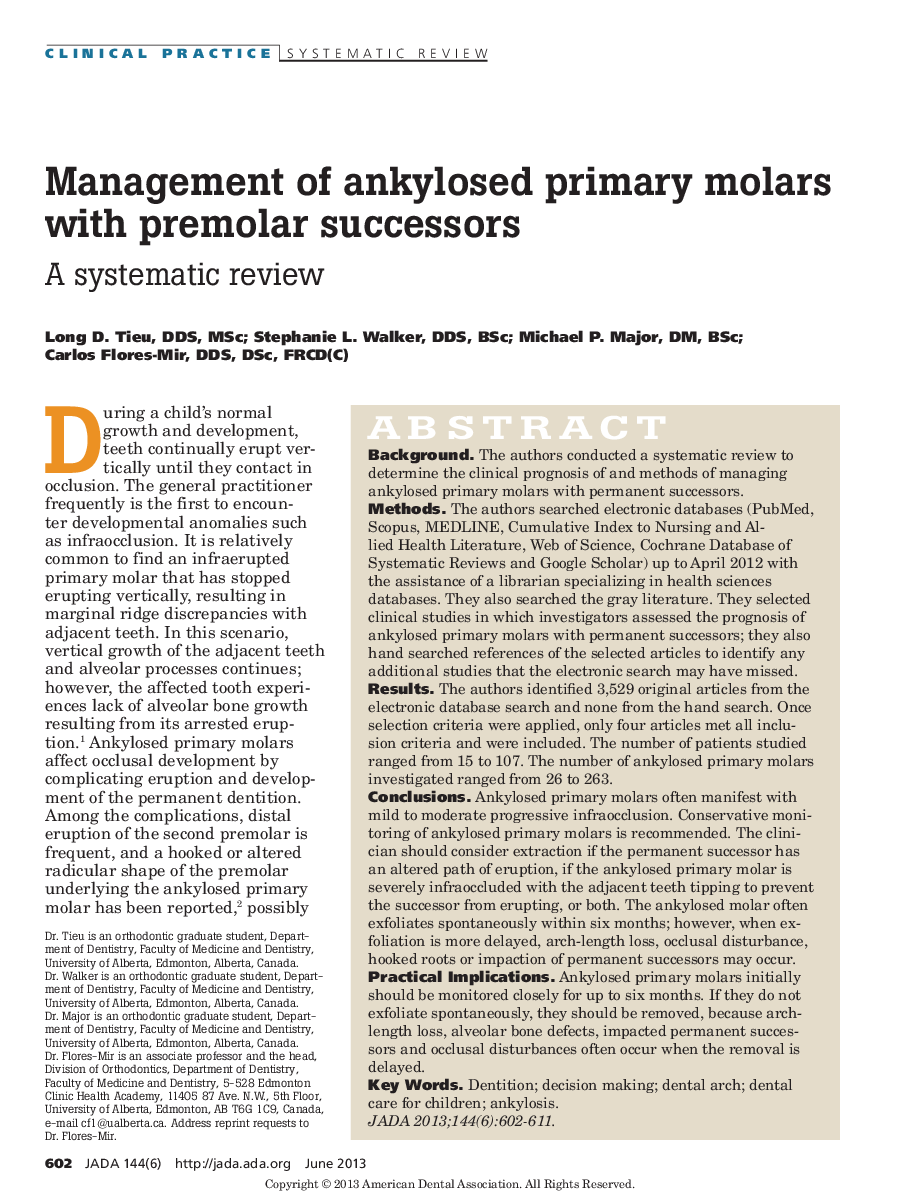| Article ID | Journal | Published Year | Pages | File Type |
|---|---|---|---|---|
| 3137272 | The Journal of the American Dental Association | 2013 | 10 Pages |
ABSTRACTBackgroundThe authors conducted a systematic review to determine the clinical prognosis of and methods of managing ankylosed primary molars with permanent successors.MethodsThe authors searched electronic databases (PubMed, Scopus, MEDLINE, Cumulative Index to Nursing and Allied Health Literature, Web of Science, Cochrane Database of Systematic Reviews and Google Scholar) up to April 2012 with the assistance of a librarian specializing in health sciences databases. They also searched the gray literature. They selected clinical studies in which investigators assessed the prognosis of ankylosed primary molars with permanent successors; they also hand searched references of the selected articles to identify any additional studies that the electronic search may have missed.ResultsThe authors identified 3,529 original articles from the electronic database search and none from the hand search. Once selection criteria were applied, only four articles met all inclusion criteria and were included. The number of patients studied ranged from 15 to 107. The number of ankylosed primary molars investigated ranged from 26 to 263.ConclusionsAnkylosed primary molars often manifest with mild to moderate progressive infraocclusion. Conservative monitoring of ankylosed primary molars is recommended. The clinician should consider extraction if the permanent successor has an altered path of eruption, if the ankylosed primary molar is severely infraoccluded with the adjacent teeth tipping to prevent the successor from erupting, or both. The ankylosed molar often exfoliates spontaneously within six months; however, when exfoliation is more delayed, arch-length loss, occlusal disturbance, hooked roots or impaction of permanent successors may occur.Practical ImplicationsAnkylosed primary molars initially should be monitored closely for up to six months. If they do not exfoliate spontaneously, they should be removed, because arch-length loss, alveolar bone defects, impacted permanent successors and occlusal disturbances often occur when the removal is delayed.
